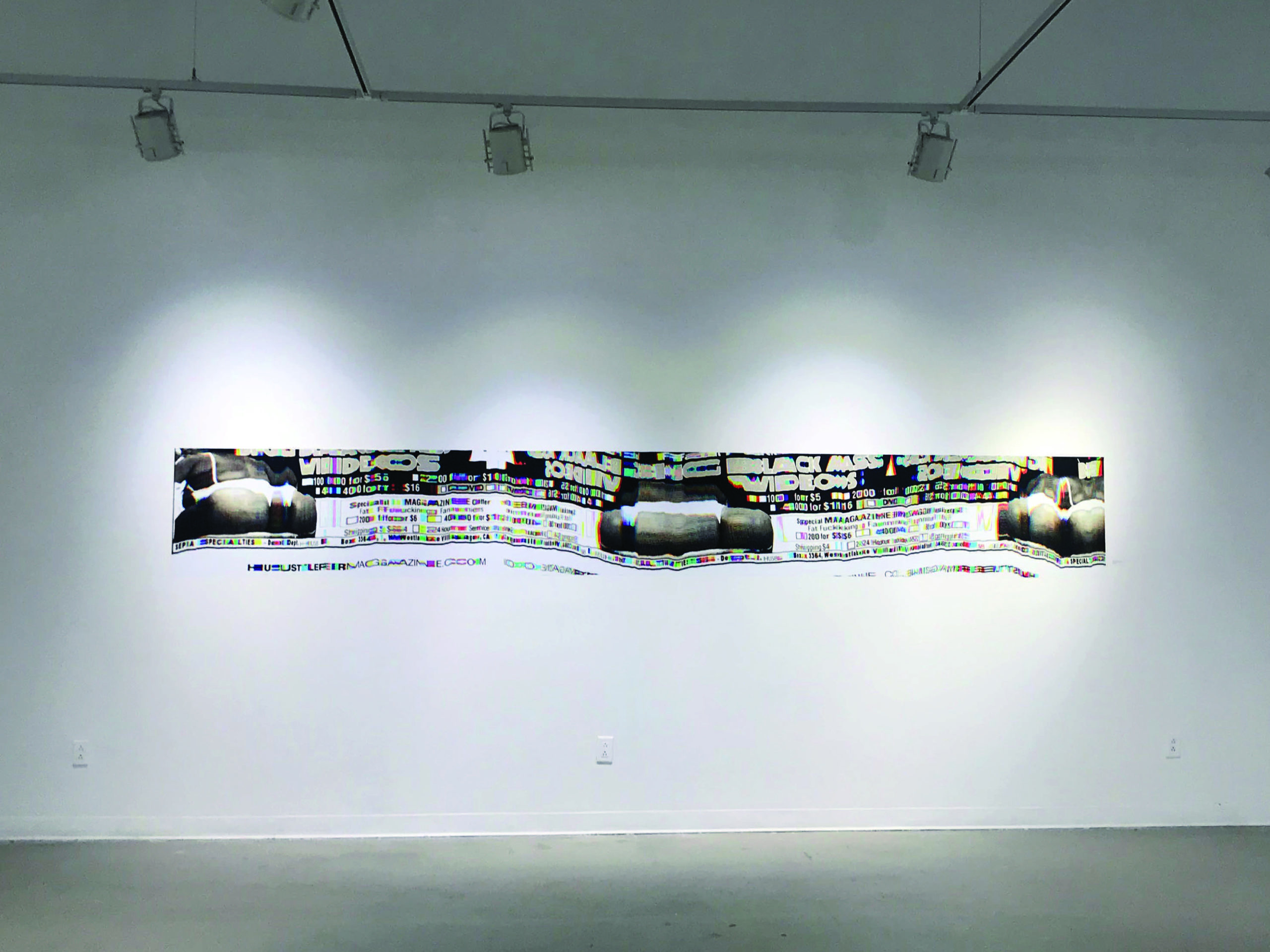Golnaz Taherian | Arts Editor
Featured Image: Mitchell’s abstract images were created by dragging the found images across the scanner. | Golnaz Taherian
Karice Mitchell, a fourth-year visual arts and art history student, presented ‘Hottentot Venus’, a black-and-white photography exhibition exploring the sexual objectification of black femininity in the adult entertainment industry.
For her work, Mitchell collected found images of black women from erotic magazines and manipulated them through the scanner to create abstract, but semi-explicit, pictures.
Mitchell’s intention was to unmask and confront the racist representation of black females which prevails throughout society.
“In the industry and media a lot of time black women are essentialized for their body. It’s prevalent everywhere, particularly in rap culture. It permeates our everyday life, and we don’t even realize because these are the images that are displayed constantly,” she says.
Mitchell stated that her inspiration for this exhibition came from the story of Sarah Baartman, a South African woman from the Khoikhoi tribe. Baartman was convinced by two British men to go to England. Although they promised her wealth and fame, they put her in a human freak show because of her large buttocks and big breasts. Show-goers went to the show to glare at her, fetishizing and essentializing her.
The British men gave Baartman the title “Hottentot Venus,” which directly inspired the title of Mitchell’s show.
In one of the artist’s pieces, there were two printed images. The image on the left showed a naked black woman with her breasts cut out. On the right, a square displayed the cut-out picture of the breasts. By showcasing the breasts in isolation, Mitchell was trying to exaggerate and bring out the bigoted absurdity of fetishizing black female bodies.
Mitchell’s abstract images were created by dragging the found images across the scanner. She explains: “The scanner is a mirror reflecting light. When you move it, it creates this glitch that has a repetitive motion. The movement is what creates the images and their dragged illusion.”
In another piece, there was a long, stretched-out banner of black and white sexual body parts. As one stepped closer to the art, colours started popping out in an aesthetically and visually interesting way. Mitchell stated that she was inspired to make this piece after noticing that the only representation of black women was essentializing their buttocks. Dragging the banner exaggerated that part of the body and, once more, brought out the racist absurdity of fetishizing the black female body.
Certain vulgar texts on the banner point to the fact that racial objectification is not only a visual, but also a verbal reality. Mitchell noted that even though the piece was abstract, she wanted to encourage the viewers to look closely at the texts to catch a hint of where the original image came from.
When asked about her advice for aspiring experimental artists, she replies: “Find a group of people who support your work. Always keep making work, and always be getting feedback on your work, because getting other people to talk about it will always push it further.”


